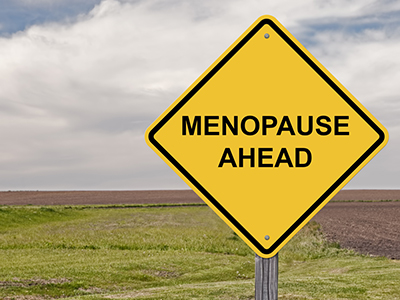Hot Flash Connection to Puberty
 Puberty is a dynamic process that occurs as young women emerge into their reproductive lives. The prepubertal process begins in the hypothalamus. There, gonadotrophin-releasing hormone neurons secrete gonadotrophin-releasing hormone (GnRH). Gonadotrophin-releasing hormone, in turn, enters the portal system in pulses, stimulating the pituitary to produce luteinizing hormone (LH) and follicle stimulating hormone (FSH), both of which act on the maturing ovary to initiate the production of estrogens and androgens and then progesterone once ovulation occurs. Once produced, rising levels of estrogen communicate back to the hypothalamus to slow the process. But how does estrogen control this feedback process since there are no estrogen receptors on the GnRH neurons? And what does this have to do with menopausal hot flashes?
Puberty is a dynamic process that occurs as young women emerge into their reproductive lives. The prepubertal process begins in the hypothalamus. There, gonadotrophin-releasing hormone neurons secrete gonadotrophin-releasing hormone (GnRH). Gonadotrophin-releasing hormone, in turn, enters the portal system in pulses, stimulating the pituitary to produce luteinizing hormone (LH) and follicle stimulating hormone (FSH), both of which act on the maturing ovary to initiate the production of estrogens and androgens and then progesterone once ovulation occurs. Once produced, rising levels of estrogen communicate back to the hypothalamus to slow the process. But how does estrogen control this feedback process since there are no estrogen receptors on the GnRH neurons? And what does this have to do with menopausal hot flashes?
Scientists have identified a small group of KNDy neurons nestled in the hypothalamus called kisspeptin, neurokinin B, and dynorphin (KNDy, pronounced “candy”). Kisspeptin and neurokinin B are stimulatory neurons and, together with the inhibitory neuron, Dynorphin, act as switches to turn on/off the prepubertal GnRH neurons, and later, hormone production during the menstrual cycle. KNDy neurons are present in the newborn but are inactive. Their emergence to initiate puberty results from the removal of a series of repressor genes that have kept KNDy neurons quiet since birth. Once these repressor genes are inactivated, the KNDy neurons initiate their stimulation of the GnRH neurons, and the whole pubertal process begins.
The role of these stimulatory or inhibitory KNDy neurons in controlling the hot flashes of menopause reflects their location in the brain. KNDy neurons are nestled adjacent to and send fibers into a cluster of neurons in our hypothalamus responsible for thermal regulation. During reproductive life when estradiol from the ovaries is plentiful, the female body only tolerates about a half degree of variation in body temperature without activating compensation within the central nervous system (CNS). This explains why spicy foods, a glass of wine, or mild and brief temperature changes in the environment do not elicit a major response.
Age and the decline in estrogen levels change these dynamics. During menopause, the half degree of thermal tolerance is lost; thus, small changes in our body temperature, so slight that one may not even perceive the change, send a powerful signal to the CNS to dilate blood vessels and stimulate sweat glands to release moisture, both of which are mechanisms to lower temperature. The role of KNDy neurons becomes critical to this process. Hot flashes are characterized by increased GnRH and increased pulsatile secretion of LH. By measuring dilation of blood vessels in the female hairless mouse tail as a model for studying hot flashes, scientists have found that removing the ovaries (and therefore eliminating estradiol from the system) stimulates GnRH and subsequent LH release, both characteristic of hot flashes, thus promoting vasodilation. Ablating the KNDy neurons, including their projections to the hypothalamus, eliminates the LH surge and eliminates vasodilation. Neuroanatomic analyses from premenopausal and postmenopausal women who died from unrelated causes support this theory. A critical reduction in the inhibitory dynorphin neurons in postmenopausal women was noted, thus, allowing kisspeptin and neurokinin B to function unopposed, leading to GnRH and LH release and less thermal tolerance.
Hot flashes, once thought to be a unique event in menopause, now are understood to be part of a much more robust biology that is related to adolescence. Armed with this knowledge of the function of the KNDy neurons, scientists can look for new approaches to hot flashes.
By James Woods, M.D.
Dr. Woods treats patients for menopause at the Hess/Woods Gynecology Practice.
Disclaimer: The information included on this site is for general educational purposes only. It is not intended nor implied to be a substitute for or form of patient specific medical advice and cannot be used for clinical management of specific patients. Our responses to questions submitted are based solely on information provided by the submitting institution. No information has been obtained from any actual patient, and no physician-patient relationship is intended or implied by our response. This site is for general information purposes only. Practitioners seeking guidance regarding the management of any actual patient should consult with another practitioner willing and able to provide patient specific advice. Our response should also not be relied upon for legal defense, and does not imply any agreement on our part to act in a legal defense capacity.
James Woods |
1/5/2016
You may also like